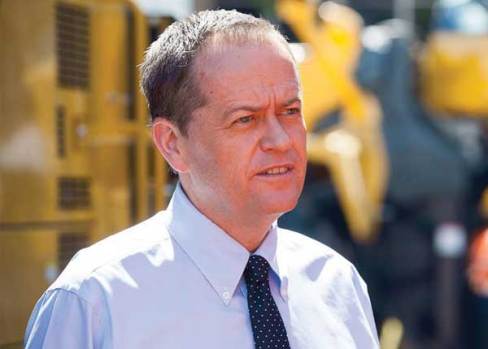By Julian Bajkowski
The Abbott government’s promise that its cull of 12,000 positions from the federal public service will only come through ‘natural attrition’ is coming even further unstuck after the Department of Agriculture told staff it wants 220 voluntary redundancies.
An all staff email from Agriculture Department secretary, Paul Grimes, candidly admits that “natural attrition in recent months has proven to be lower than forecast” and that the department is now making “arrangements for a voluntary retrenchments program to further reduce our staffing levels.”
Mr Grimes’ recognition that natural attrition rates are materially less than anticipated is a double headache for the government because the retrenchments planned for Agriculture are a bitter hangover from the previous Labor government’s loathed efficiency dividend.
(Read the full letter at the end of this article)
The problem for the government’s big staff reduction target now is that if departments are forced to retrench staff to meet the efficiency dividend because of low staff turnover, it is thus effectively impossible to argue that targets can be met without resorting to more sackings.
It is understood that more departments are planning to offer staff voluntary redundancies as they prepare for the new year and the prosecution of a new set of policy settings that will start their legislative path with the first sitting of the 44th Parliament this week.
The issue of staff cuts and their effectiveness (or otherwise) is primed to become a key target for Labor during the Senate Estimates process because public servants and ministers will be forced to provide answers in terms of how the natural attrition approach is panning out.
The issue is a potential gift for the Opposition because it could force an admission that the government will either have to resort to sackings or pare back its targets – the latter being highly unlikely.
With the first redundancies slated to come from Agriculture’s Border Compliance Division in Canberra and passengers, mail and cargo programs in the regions, Labor is already lining up new Agriculture Minister Barnaby Joyce for a punishing welcome to his portfolio.
For younger or mid-career public servants, the present impasse represents a career advancement opportunity.
The Australian Public Service Commission has effectively suspended its requirement for vacant Australian Public Service executive positions to be made open to public application as well as those from public servants within the bureaucracy.
The move to backfill vacant executive positions only from within means that dozens of Executive Level 2 – unkindly nicknamed to as the ‘burn zone’ because of high workloads with little promotional reward – could get a leg-up to Senior Executive Service Level.
But all stakeholders are happy about that approach or the move to eschew sackings and redundancies.
At a dinner and address to the Committee for Economic Development in Australia by the chairman of the government’s Business Advisory Council and former Australian Securities Exchange chairman Maurice Newman on Monday night, attendees were questioning how the public service could become more attuned to business’ needs if they could not recruit from the private sector.
Firm supporters of the government, who asked not to be named, told Government News that the ‘no sackings’ approach was naïve, inflexible and missed a ‘golden and highly transient opportunity’ to inject ‘real talent’ to boost productivity and fresh thinking in the public service.
Letter from Agriculture Secretary Paul Grimes to departmental staff:
From: Grimes, Paul
Sent: Friday, 8 November 2013 3:17 PM
To: All DAFF (Aust. Wide)
Subject: Staff Update: Future directions to strengthen our department [SEC=UNOFFICIAL]
Colleagues
In my recent messages I have promised to update you on our budget position and the strategies planned to restore our department to a long-term sustainable footing.
These include modernising and improving our service delivery, investing in better systems, prioritising our work, continuing to implement risk-based interventions and reducing staff numbers through natural attrition.
Natural attrition in recent months has proven to be lower than forecast. I would therefore also like to brief you on the arrangements for a voluntary retrenchments program to further reduce our staffing levels.
As you may remember, I requested a comprehensive update on our finances several weeks ago. Our Acting Chief Financial Officer has now confirmed that the department currently faces a sizeable deficit this year.
This follows deficits in each of the two previous years. This situation is not sustainable, and urgent and decisive action is required to restore our budget to balance.
A great deal of work is already underway across the department to address our budget deficit and I am confident that we will be able to work through the adjustments we need to make in a considered and thoughtful way.
Over coming months, our key tasks will include:
Prioritising our work — Reviewing our functions and programs in light of our budget situation and the Government’s priorities. We will prioritise our work that must continue — in biosecurity, our core policy and program functions, and our services to support Australian farmers and businesses. We will identify lower priority functions and activities that may be discontinued.
This work will be undertaken as part of our internal budget process and will be informed by the directions set by the Government.
Modernising our service delivery — Our service delivery modernisation program is transforming the way we work. It will make it easier and cheaper for our clients to meet their regulatory obligations while reducing our costs as we move away from an inefficient paper-based model to a more streamlined process supported by new technology. This is an important piece of work in finding ongoing efficiencies and supporting the Government’s deregulation agenda.
Re-designing our structures — We need to look at how our divisions and branches are structured and where they are located, looking for ways to bring together functions more efficiently. Our senior executive (SES) numbers will need to be reduced as part of this process.
Examining our cost recovery arrangements — A large proportion of our revenue is from our fees and charges. I am pleased to report that a considerable amount of work has been completed in recent months on possible long-term revenue arrangements that better fit the changing nature of our work, and reduce the regulatory burden on business. This work will feed into advice to be considered by the Government.
I will brief you further on each of these streams of work at key points. Our work will depend on whole-of-government decisions up to and including the 2014 15 Federal Budget in May next year. I would stress however that our business improvement work will be ongoing: it is not about making all the changes all at once, but rather building step-by-step in a well-considered fashion.
It is also not about deferring changes that can be made early — as I have outlined above our budget situation calls for decisive action.
As a first step, the Executive has decided to commence a voluntary retrenchment program. Natural attrition alone has not been sufficient to achieve the necessary staff reductions.
We will need to continue reducing staff across the department.
The precise number of VRs will depend on the extent of ongoing natural attrition. We anticipate that in the order of 220 VRs will be required in coming months.
In the first instance, offers will be made in Border Compliance Division in Canberra and the passengers, mail and cargo programs in the regions.
The analysis we’ve done and continue to do, including through the transition committees, will allow us to manage biosecurity risk effectively.
Further offers will be made progressively in other areas of the department as our budget business priorities are identified. We will consult with you on the process as it progresses.
We may not be able to make offers to everyone who is interested — we have an obligation to maintain core skills. And we must fulfil our obligations to manage our funding carefully.
We want to make sure workloads for remaining staff are sustainable and that we continue to deliver our core services effectively.
We will commence consultation with staff representatives and the CPSU on this process immediately through the National Employee Consultative Committee with a view to providing detailed advice and guidance over the next couple of weeks.
Our approach to Organisational Change
This change agenda is more than restoring our budget to balance – our goal is to build an ever-stronger department that continues to be recognised for its professionalism and high standards.
To do this we must:
• Maintain core functions that the Government and community expect of us.
• Engage and consult at all levels of the department. Organisational change is most effective when everyone has an opportunity to contribute and information is shared.
• Prioritise our activities to ensure that workloads are sustainable and manageable.
• Build and maintain a positive working environment — a collegiate department that is both professionally and personally rewarding.
• Find new and improved ways to do our job.
I know the challenges are significant. However, my positive engagement with colleagues at all levels, across the regions and in Canberra, gives me great confidence we deliver this. We will continue to build on the improvements already made to our business and improve our longer term financial sustainability.
We will be providing you with more information shortly, and the People Services Branch Transition Team will provide details and be available to answer your questions as soon as the consultation with staff representatives and the CPSU is completed.
Paul Grimes
Secretary
08/11/2013
[Ends]
Comment below to have your say on this story.
If you have a news story or tip-off, get in touch at editorial@governmentnews.com.au.
Sign up to the Government News newsletter


